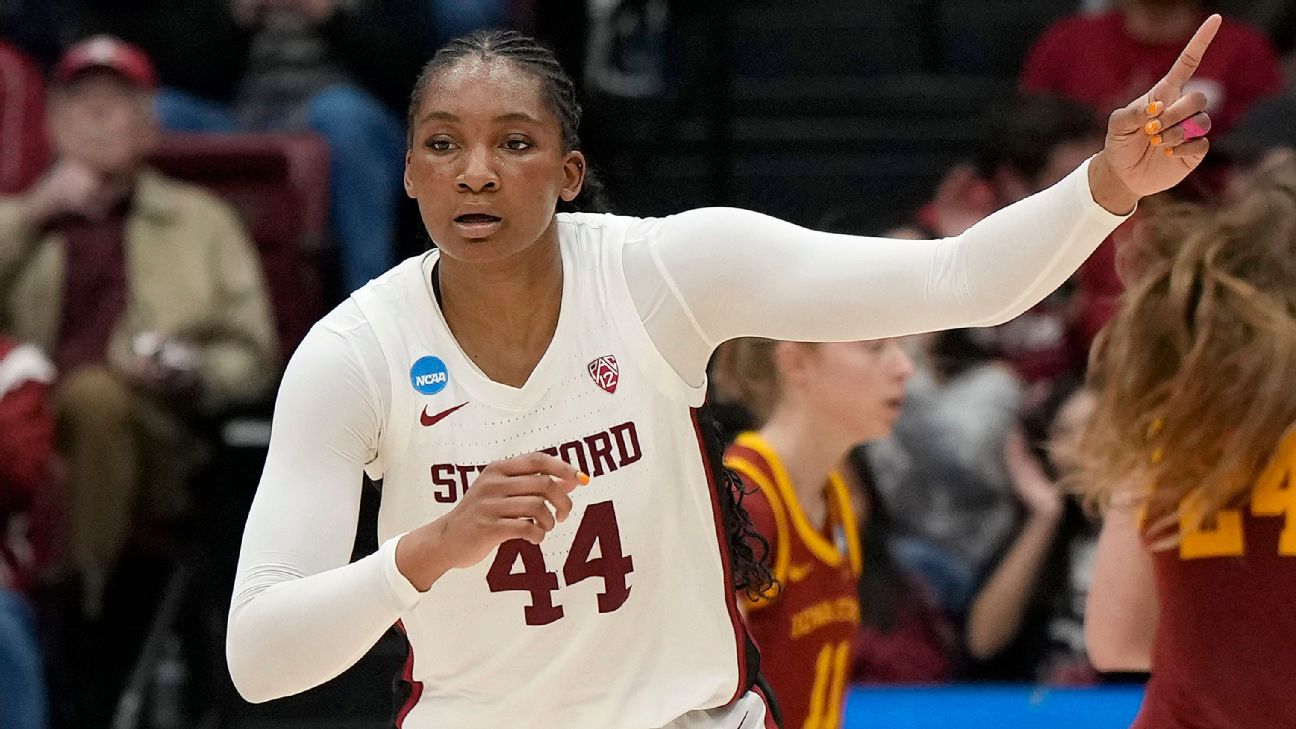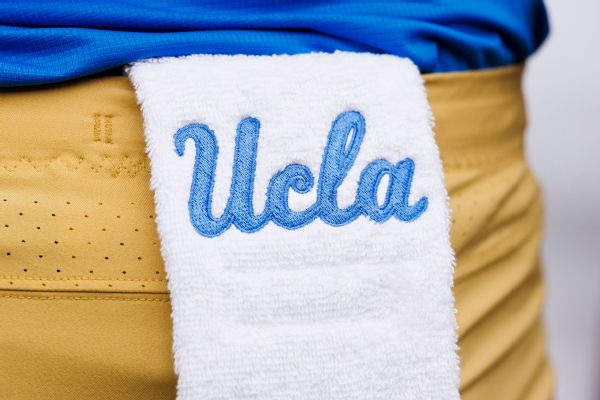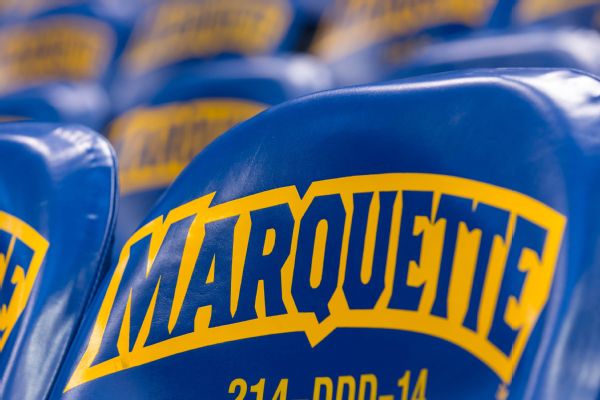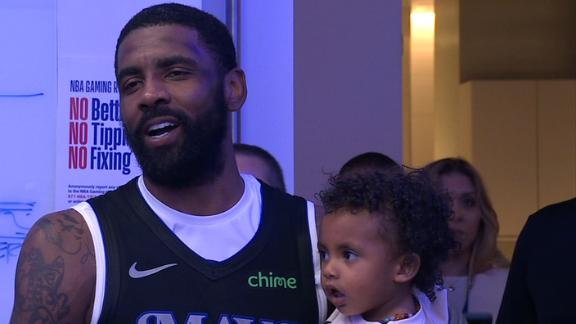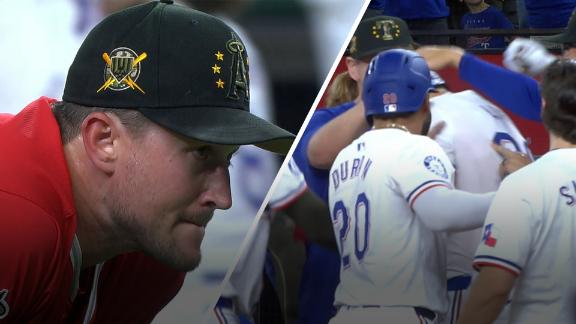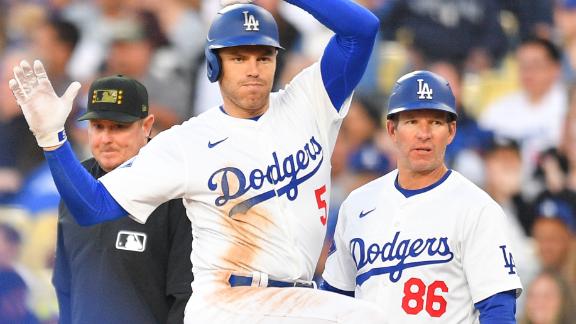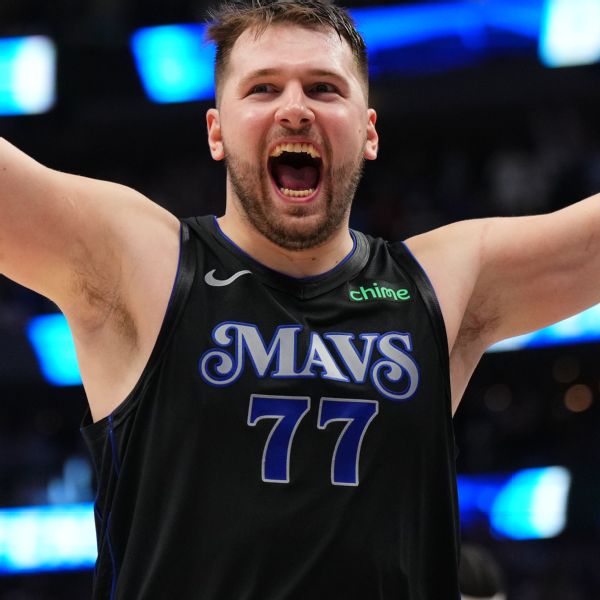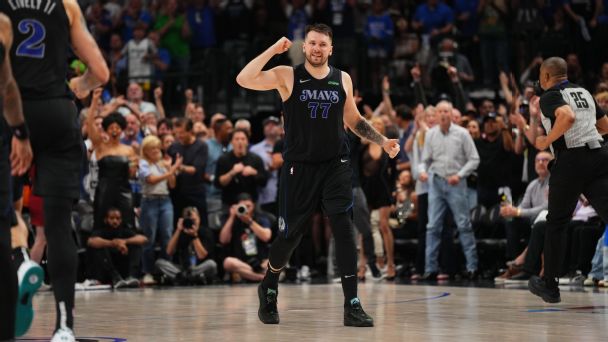![Dewar Cup [1296x729]](https://a.espncdn.com/photo/2024/0505/r1328680_1296x729_16-9.jpg)
Rookie Wenceel P rez hits three-run triple in six-run 7th as Tigers beat Diamondbacks 8-3
The U.S. Open Cup, the longest-running soccer tournament in the United States, is at a crossroads.
Storied and famous for its inclusion of semi-pro and amateur teams that battle professional clubs through fairytale-like runs in single-elimination games, the 110-year-old tournament is in a period of uncertainty as American soccer leaders have grappled with the status of the competition. Noticeably, that led to a boiling point last December. Months before the start of the 2024 edition, Major League Soccer, representing the top division in the U.S. Open Cup, publicly stated an intention to use affiliated third division teams in place of its clubs.
- Stream on ESPN+: LaLiga, Bundesliga, more (U.S.)
"Major League Soccer announced today that at its recent Board of Governors meeting its clubs voted to have MLS NEXT Pro teams represent the organization in the 2024 Lamar Hunt U.S. Open Cup. MLS will coordinate with U.S. Soccer regarding participation in the tournament," read a press release.
Fellow stakeholders in the tournament were caught by surprise. The U.S. Soccer Federation (USSF), the overarching governing body that runs the U.S. Open Cup, at first denied MLS' request to remove its top division teams, before later approving a hybrid version of the tournament that featured just eight MLS clubs.
The USSF's process led to irritation within the United Soccer League (USL), a substantial part of the lower league structure that also takes part in the tournament. Frustrated by how things were handled, a minority group of USL owners initially considered dropping out of the U.S. Open Cup, although they later unified with other USL owners to fully participate in the competition.
Approvals and structural changes were eventually finalized and made public just weeks before the start of March's first round. With 96 teams entering -- and notably without Lionel Messi's Inter Miami -- all involved found a way to get the ball rolling for 2024.
All that said, it's highly apparent that disagreements remain on how the U.S. Open Cup should evolve. So where does the oldest American soccer tournament go from here?
Through conversations ahead of the U.S. Open Cup's round of 32, which will introduce MLS' eight teams into the mix this week, ESPN collected insight and perspectives across a handful of voices within American soccer. Ranging from front office executives to a fan who has watched the "magic of the cup" in the stands, here's what they had to say about the significance, role, and history of the U.S. Open Cup.
Editor's Note: Some quotes have been lightly edited for clarity. The USSF passed on an interview request from ESPN.
Recognizing the "tradition" of the U.S. Open CupFew people, if any, are literally as close to the most important pieces of American soccer history than Djorn Buchholz. As the executive director of the National Soccer Hall of Fame -- located in FC Dallas' south end at Toyota Stadium in Frisco, Texas -- Buchholz oversees priceless artifacts on a regular basis, including relics from the U.S. Open Cup.
"We're talking about a tournament that's been played since 1914," said Buchholz. "I think it's important when we're telling the history of the game, to focus a lot of times on that tournament, to show people how long the sport has actually been here and what a rich history it actually has."
Along with invaluable U.S. Open Cup medals, pins -- and a "Red Star Club" area that's devoted to the tournament -- the Hall of Fame also houses arguably the most important U.S. Open Cup souvenir: The Dewar Cup, which was given to the original winners of the competition that was once formerly known as the National Challenge Cup.
Long before MLS debuted in 1996, before Pelé galvanized interest in soccer through his famous NASL stint with the New York Cosmos in the 1970s, and even before the U.S. men's national team participated in the first FIFA World Cup in 1930, the Dewar Cup existed in the American soccer scene.
"It's a beautiful piece of hardware, it's got wooden bases, cylinders around that are kind of small at the top and then get bigger," said Buchholz.
Trophies have changed over the years for the U.S. Open Cup, and despite the Dewar Cup no longer being handed to the champions, every tournament victor is still notated on the original silverware.
"When we get a new winner, there's a little plaque that goes on that's maybe an inch tall and three inches wide that says the year and who won it. I send that off to a company here locally, who engraves it and sends it back and we put it on the trophy," said Buchholz.
A brief glance at those names would highlight MLS' recent dominance in the tournament. Since the league's introduction, it has won 25 of the last 26 editions of the U.S. Open Cup. The first to do so from MLS? That's D.C. United, who were able to claim a double through a league title and later a U.S. Open Cup title in MLS' debut season in 1996.
"We won the MLS [Cup] and it was like okay, we still got one more game now. We [only] had a couple of days to celebrate," said former D.C. United player Tony Sanneh, who currently works in community and youth engagement through The Sanneh Foundation.
With Sanneh on the field in 1996's U.S. Open Cup final vs. the now defunct Rochester Raging Rhinos, D.C. United would go on to score twice in the last 30 minutes of a 3-0 win, thereby making them the first MLS side to secure the tournament's title.
"The game started off slow," said Sanneh. "Then we came on and then the second half we took care of business."
Years later, and no longer celebrating with the national trophy, the former USMNT player expressed concern about the state of the domestic tournament.
"It's unfortunate that this [the Open Cup] doesn't get the priority and that we don't as a country respect the history. This is the thing that's been here the longest, so it should be really valuable, and even in England, you see how valuable all the cups are, because it's tradition," said Sanneh.
"When it's in our blood and it's tradition and it means something, just to mean something without a financial gain, that's when you know soccer is here to stay."
With MLS' diminished presence in the U.S. Open Cup, he shared worry about the competition that is the sole route for non-MLS teams to face first division sides in a country that has no promotion and relegation, as well as a belief that stakeholders must do a better job.
"You just hope that the federation and them [MLS] can come to an agreement that prioritizes this tradition, because that should mean something. If we really want to be a part of the global game, and the fact that we don't have [promotion and] relegation in this country, this is the one way that we can still tie in everything together," said Sanneh.
"This is the one time everyone gets a fair shot."
The push and pull between soccer's stakeholders"We believe that we belong to this whole ecosystem and want to participate in it," said MLS' Nelson Rodriguez, executive vice president of sporting product and competition. "We're just saying that the world of football has evolved and we need the Open Cup to evolve."
According to Rodriguez, conversations with the USSF about the U.S. Open Cup began in May of last year. Noting numerous factors -- including a desire for the federation to make more investment into the tournament -- discussions were held.
Improved economics for all participating teams, greater investment in marketing and broadcast standards, more prize money, stricter standards for fields and venues, and allowing more pro vs. amateur match-ups were some of the ideas that were brought to the table by MLS. Relating specifically to MLS, opinions were also voiced about player load and schedule congestion, possibly entering the U.S. Open Cup in later rounds, and also allowing participation of MLS Next Pro teams.
Much has been made about MLS adding more to its own scheduling congestion plate through the creation of the Leagues Cup tournament with Mexico's Liga MX, which has full MLS participation, and in response, Rodriguez commented that their worries about player load and congestion weren't specific to just that competition.
"The idea of player load and schedule congestion, to us, those are two different things, although they're related. This is not unique to MLS, this is not unique just because we added Leagues Cup, Copa America is going to play this year in the U.S. and we anticipate having up to 60 MLS players involved in that tournament," said Rodriguez.
"That's a whole another range of games that they're eligible for or playing that goes beyond the physical, [it] goes to the psyche of the player, the emotion and the psychological state of a player, those tournaments carry a lot of pressure."
From the perspective of one side of the table that brought up all of these topics and more to the USSF since last May, no progress was made.
"We got to December with no change, nothing," said Rodriguez.
By then, MLS was pushing more for their MLS Next Pro teams to be involved in the U.S. Open Cup. Rodriguez stated that they didn't receive a "definitive reply," which then led to their press release in December that drew widespread anger and condemnation.
"Could we have handled the announcement better? Absolutely. In retrospect, absolutely. We did not do a good job there and that's on us. That also probably put U.S. Soccer in a difficult spot," said Rodriguez.
"We needed to do better there and we didn't and hopefully we'll do better in the future, but it wasn't an all of a sudden thing."
As noted earlier, the USSF initially denied MLS' request, before changing course and allowing a hybrid participation with eight MLS teams -- a first since 2011. In the 2012 edition and beyond, all MLS teams were involved in the U.S. Open Cup.
"That [intention to field MLS Next Pro teams] seemed at least to generate a whole new round of discussions, it involved other constituents and participants in the Open Cup, but even then, not everything came together until February of this year," said Rodriguez.
He noted that more could be done but has also gave credit to the USSF for following through with an increase in investment and meeting many of the goals that were laid out. Approval was certified by a newly formed U.S. Open Cup subcommittee, a group that, according to ESPN, was formed despite the presence of an already existing U.S. Open Cup committee.
Regarding MLS' ability to field only eight first teams, which is against the USSF's Pro League Standards requirement that a Division I Men's Outdoor League must have its U.S.-based teams "participate in all representative U.S. Soccer and Concacaf competitions for which they are eligible," MLS was given a waiver for 2024.
Faced with an alternating blueprint, the USL wasn't pleased with the outcome after a different set of goals were discussed in December.
"A decision was made to try to adopt this format for one year, not to kill the Cup, which is fine, but you know, if we have the Pro League Standards that say a certain thing, why don't we just stick to them," said USL president Paul McDonough when asked if the USSF should have maintained their denial of MLS teams being replaced by MLS Next Pro teams.
Before confirmation that USL had full support for the U.S. Open Cup, doubts about tournament participation from a minority group of USL owners emerged.
"It was really more ... the changing of U.S. Soccer's decision from December," said McDonough when asked why teams considered dropping out. "People just didn't feel good about how things were handled."
USL's president is also waiting to judge the impact of the latest changes in regulations, which includes the aforementioned increase in investment that impacts all U.S. Open Cup participants.
"I think U.S. Soccer tried to make some steps in the right direction," he said. "I think we don't really know if it's been good or bad until we're able to look back at the whole collective, but I think even when we look back on it after the final, I think you have to judge it over the next couple of years, because there was so much drama and tension around this year's tournament."
Impacting the "magic of the cup" for non-MLS teamsPrior to winning the U.S. Open Cup as a player, and nearly winning it in 2022 as the president and general manager of the USL Championship's Sacramento Republic, Todd Dunivant was just another fan watching the historic tournament from the bleachers.
"The best game that I've ever been to was a U.S. Open Cup game when I was in college," said Dunivant.
"I got to go see San Jose Earthquakes against LA Galaxy in San Francisco at Negoesco Field [in 2001] ... it was incredible because we were two rows from the action, right on top of the field. These two MLS heavyweights were just slugging it out and it was awesome to be part of that, awesome to see, it was everything I wanted to be as a soccer player ... I knew exactly what I wanted to do, [it] was to be part of that and to have moments like that."
Coincidentally, Dunivant would go on to represent both the Earthquakes and the Galaxy as a professional player. In 2005 he went on to lift the U.S. Open Cup with the Galaxy, and years later in 2022 as president and general manager of Sacramento, Dunivant and his second division team defied all odds through a miracle tournament run that featured three consecutive wins against MLS opposition.
The third win, in a raucous semifinal at home against Sporting Kansas City, went down to the wire through a penalty shootout for a place in the championship. Up stepped Rodrigo López, their captain that was once living paycheck to paycheck and sleeping in a closet, and with his shot finding the back of the net, Sacramento had gone through to the final.
Dan Tyree, a long-time fan of the Republic, still fondly remembers that moment.
"I've been to World Cups, I've been to NBA Playoffs, I've been to World Series games, nothing in my life compares to that Open Cup semifinal," said Tyree.
"It was just goosebumps, people hugging each other that were strangers, we stayed after playing an hour afterwards hugging players and high-fiving players. It was just one of those moments you never forget."
Despite Sacramento falling 3-0 to Orlando City in the championship, history had still been made for the team that was tantalizingly close to becoming the first lower league side to win the U.S. Open Cup in the 21st century.
"That is the magic of the cup because, then you have the opportunity to test yourself against competition you don't normally face, and for us, playing MLS teams was a great challenge and one that our guys were excited about," said Dunivant.
Moments like those may now be more difficult to come by with fewer first division MLS teams in the setup. With only eight MLS clubs entering the upcoming round of 32, that leaves a much stronger likelihood that non-MLS teams will only get to test themselves against each other and not the first division.
"Yeah, I think it does," said Lopez when asked if some of the magic of the tournament was erased by MLS' diminished role. "I definitely think that they're taking away a little part of the history in this country with the U.S. Open Cup. You see other countries and no other first division is able to do that or get out of playing in a cup. For MLS to do that I feel like it might downgrade it a little bit, but for us, we can only worry about us and what we do."
In the stands, that also means fewer opportunities to gain extra ticket revenue for USL clubs when hosting prominent MLS teams.
"Those games were huge," said Dunivant. "We hosted the San Jose Earthquakes in the round of 16 [in 2022], sold the game out, these are midweek games that aren't on the season ticket package. Then we hosted Sporting Kansas City in the semifinals, instant sell-out there. It was just incredible to our fan base, and it's helped us ever since."
MLS has openly stated their reasons for making the changes they have done through the U.S. Open Cup, but from the perspective of a fan or player in the USL, there's a differing opinion on why the first division now has a limited role.
"Honestly, I don't think it's a schedule congestion [problem for MLS]," said Tyree. "They've gotten embarrassed a few times by lower-level teams and they don't like it. I think if they put forth their best effort, obviously nine times out of 10 they're probably going to win, they got the higher quality of players ... but the reality of it is miracles happen."
"With so many tournaments that they're playing in MLS, obviously they prefer the tournaments that will get them more money. Playing against teams from Mexico ... is going to get them more money, it's going to be financially better for them," said Lopez.
"If that's what they're thinking about, it makes sense, but from my standpoint and tradition and respect for the soccer in this country, I think they're making the wrong choice."
Developing MLS' next generation of superstarsFrom the vantage point of USL clubs, non-MLS teams, fans of lower league soccer, and even supporters of the U.S. Open Cup as well, there's plenty of reasons to feel skeptical about the push and pull in recent months.
Nonetheless, an interesting outcome are the up-and-coming MLS Next Pro players and coaches that have gained substantial experience through the U.S. Open Cup.
"Ultimately, the more meaningful games the players can get at any age, especially young ages, it's huge for their development," said New York City FC 2 coach Matt Pilkington.
"For the benefit of U.S. soccer, the benefit of players within this country, they need more opportunities to play cup competitions, knockout competitions, where there's something on the line. Where mistakes can cost you, where game-changing plays and big moments can propel you to a big victory and move you on to the next round to play a high level opponent.
"We really relish this opportunity to play in the tournament."
Fielding a starting XI that had an average age of 20.1 years for their U.S. Open Cup third round match, NYCFC 2 stunned the USL Championship's Hartford Athletic last month with a dramatic 3-2 victory in extra time.
The game-winner, scored by 16-year-old Maximo Carrizo, was enough to keep NYCFC 2 alive and through to the round of 32.
"The experience alone, to be in a high tempo game that had something on the line, it was actually something to play for, and it's a different feel for these players," said Pilkington. "It's huge for their development, the more opportunities they can have with these knockout games, I think the better."
The experience also extends to Pilkington and other staff within MLS Next Pro.
"It's not just for a player that's getting minutes, but it's also for a coach that's getting an opportunity, or a staff member that's also being involved in a competition that's unlike the regular season. There's a different type of pressure," said Ali Curtis, senior vice president of competition and operations for MLS Next Pro.
"All those things are really good for development for players, for coaches, for staff."
For those in charge, there seems to be no headaches with the fact that only one MLS Next Pro team is left. Of the 11 that entered in the first round, seven qualified for the second round. Three qualified for the third round, which then left NYCFC 2 as the lone MLS Next Pro representative in the upcoming round of 32.
Curtis, a former player, reflected on gaining lessons from his own U.S. Open Cup experience, despite ultimately losing the game.
"I remember playing in the Open Cup as a 22-year-old. I remember we played a lower division team. So we traveled to a different market, stayed in a hotel I'd never stayed at before, played a team I'd never played. There was a different type of preparation for the game because we didn't have as much information or intel on the tactics and the different players. The field was different, the crowd was different," said Curtis.
"I learned a lot, to be honest with you, as a player. I learned how to approach a game like that, that's different."
MLS is already reaping the early stages of the MLS Next Pro structure that kicked off just two years ago. Recently in the high-profile Concacaf Champions Cup semifinal series between the Columbus Crew and Liga MX powerhouse Monterrey, 21-year-old Jacen Russell-Rowe (who played in MLS Next Pro in 2022), collected two goals and an assist in the series.
Elsewhere in the Columbus roster that claimed a brilliant 3-1 away win over Monterrey, fellow MLS Next Pro alumni such as Patrick Schulte and Sean Zawadzki also thrived in the intimidating series.
With the help of the U.S. Open Cup, more could follow.
"In the moment, sometimes it's hard to see the benefits," said Curtis. "A few years down the line, when you kind of track back what were some of these key moments that helped the team or helped the player or helped the coach, you look at some of those [U.S. Open Cup] moments.
"I think it's gonna be special as we look back on this in the coming years."
The next steps forwardAs the tournament continues through the knockout rounds that build up to the final on Sept. 25, all participants will await guidance from the USSF as plans for 2025 and beyond will be discussed.
"U.S. Soccer had indicated that it was going to assemble a committee to look at a longer-term solution for the Open Cup," said Rodriguez. "We will await U.S. Soccer's direction."
When asked if it's possible to satisfy the goals of all parties involved, MLS' EVP noted the difficulty of the path ahead.
"Probably not," said Rodriguez. "There's a lot of personal or organizational interest, but I do believe that the Open Cup can continue to have an important place in the ecosystem in the United States and we remain open to trying to contribute to that in a positive way, as we believe we have, for many years."
Whether it be from MLS, the USL, the USSF and other participating stakeholders and leagues, there's a recognition that everyone will still need to come together to find solutions for the tournament that has an unclear future.
"If we all really believe in the [U.S. Open] Cup and we want the Cup to grow, then we have to make a plan going forward," said the USL's McDonough. "How to make it more relevant to the fans, and it has to start with the teams and the leadership of organizations. If we believe in it, then hopefully the fans do too."
By doing so, further layers can be added to the legacy of the competition that has existed for over a century.
"I just hope in the long run that everybody understands what a historical tournament it has been, what a gem it is in American soccer," said the Hall of Fame's Buchholz.


